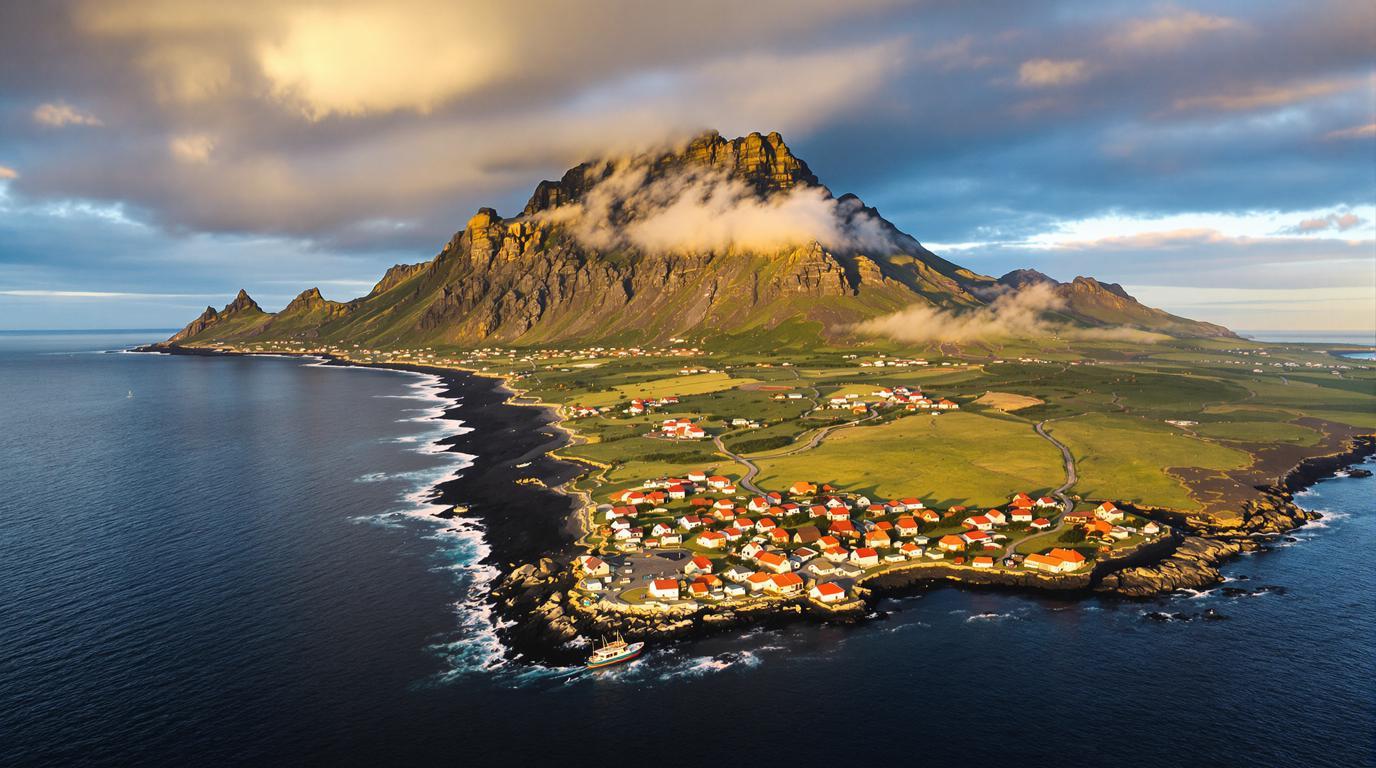Tristan da Cunha sits alone in the vastness of the South Atlantic Ocean, a tiny speck of civilization that few have visited and even fewer call home. This remote volcanic island, home to just 200 residents, lies approximately 6,000 miles from the United Kingdom, making it one of the most isolated British territories on Earth. With no airport and surrounded by notoriously rough seas, this remarkable community has developed a way of life that defies modern expectations.
The world’s most remote inhabited island
Despite being technically British, Tristan da Cunha is geographically closer to South Africa, sitting about 1,500 miles from Cape Town. The island’s only settlement, Edinburgh of the Seven Seas (named after a visit by Prince Alfred, Duke of Edinburgh in 1867), houses the entire population in a tight-knit community that has survived against incredible odds for nearly two centuries.
“Living here means being part of something truly special,” explains island council member James Glass. “We’re not just neighbors—we’re family, relying on each other in ways the outside world has forgotten.”
The six-day journey by sea
Reaching Tristan requires commitment and patience. With no airstrip, visitors must travel by ship from Cape Town on a journey that typically takes six days across notoriously rough waters. Ships only visit a handful of times per year, and even then, landing is never guaranteed—approximately 40% of attempted landings fail due to dangerous sea conditions.
This isolation has fascinated adventure travelers seeking experiences beyond the typical island getaway, drawing parallels to other remote destinations that remain largely untouched by mass tourism.
A self-sufficient lifestyle
The islanders live with remarkable self-sufficiency, fishing the abundant waters and farming small patches of land. Their diet consists largely of potatoes, vegetables, and seafood, particularly the highly-prized Tristan rock lobster that provides the main income for the island through export.
Unlike the vibrant festivals found in Thailand or the architectural wonders of European capitals, Tristan’s charm lies in its simplicity and resilience. Technology is limited, internet connectivity is spotty at best, and residents share just a few surnames, being descendants of only eight male settlers and seven women.
Volcanic landscape and pristine nature
Dominated by an active volcano that last erupted in 1961 (temporarily forcing evacuation of all residents), the island features dramatic landscapes that could rival some of the most unusual national parks in America. Queen Mary’s Peak rises to 6,760 feet, often shrouded in mist and clouds, while black sand beaches and rugged cliffs provide habitat for millions of seabirds.
The nature here remains as it was centuries ago—we’re merely guests in this ecosystem, and we honor that relationship with deep respect.
A community united by isolation
Perhaps most remarkable is the social cohesion born of extreme isolation. Crime is virtually non-existent. Everyone contributes to community welfare, from maintaining the single road to staffing the school, hospital, and government buildings. Money plays a minor role in daily transactions, with community members freely sharing resources and supporting one another.
While lacking the luminous waters of South Pacific paradises, Tristan da Cunha offers something increasingly rare: a glimpse into a society that has evolved in near-isolation, creating unique cultural practices and a way of life that prioritizes community over convenience.
An island facing modern challenges
Despite its remoteness, Tristan faces modern challenges. Climate change threatens fishing stocks, while younger generations increasingly leave for education and opportunities abroad. The community works diligently to maintain its unique way of life while adapting to an interconnected world that grows ever closer, even to the most isolated places.
For those fortunate enough to visit, Tristan da Cunha offers not just breathtaking landscapes but a profound lesson in human adaptation and community—a tiny society that continues to thrive at the edge of the inhabitable world, 6,000 miles from the country whose flag it flies.
